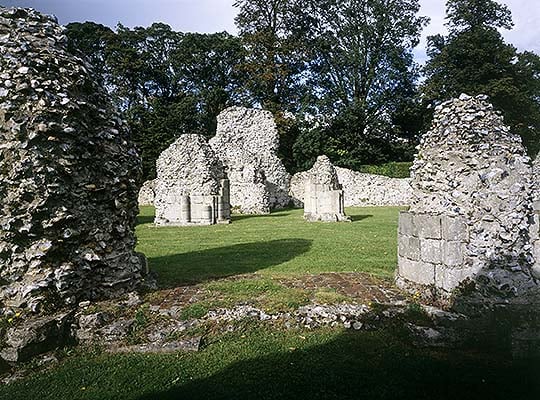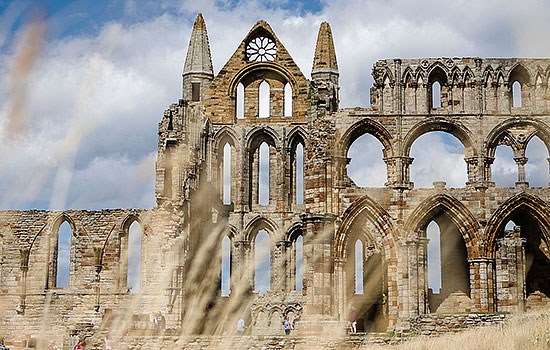History of Thetford Priory
The Priory of Our Lady of Thetford was one of the largest and richest religious foundations in medieval East Anglia. Founded in 1103–4 by Roger Bigod, the priory was affiliated to the great Benedictine abbey at Cluny in France and was built on a magnificent scale in the rich architectural style typical of the Cluniac order. It was suppressed in 1540 during the Reformation, and most of its buildings subsequently fell into disrepair. The extensive abbey ruins include an exceptionally well-preserved gatehouse.

Origins
The essential plan of the monastery was established by the founder, Roger Bigod, a close associate of William the Conqueror. He laid the foundation stone of the priory on 1 September 1107 just outside the medieval town walls of Thetford on a spacious and level site beside the river.
Work on the church began in 1107 and the presbytery (east end) was probably complete by 1114. The nave, however, was probably not finished for another 60 years.
In 1114 work was sufficiently advanced for the community of monks to enter their new home. These 12th-century monastic structures were adapted and extended throughout the Middle Ages.
Following the typical monastic layout, the buildings were arranged around a central cloister which was enclosed on each side by covered walkways. The cloister walks gave access to all the main rooms used by the monks, including the church, the refectory (dining room), dormitory and chapter house, the formal meeting chamber of the community.
Extending beyond the core of the monastery were the infirmary, with its own smaller cloister, and the prior’s lodgings. There were also various free-standing buildings associated with the running of the monasteries estates, such as barns and stables. The whole complex was enclosed by a wall and entered through a gatehouse.
The Priory before the Suppression
From the mid-13th century the priory church was home to a miracle-working statue of the Virgin, which became a popular object of pilgrimage. The cult brought considerable financial reward to the priory, and before the end of the century the whole east end of the church was rebuilt on a more elaborate scale.An impressive new gatehouse was built in the 14th century.
In 1248 a notorious and dissolute prior of Thetford called Stephen was stabbed during a quarrel with one of his monks. He died just outside the great west door of the church.
On the death of the last Roger Bigod in 1306, the family’s Norfolk estates passed to the Crown and then to the Dukes of Norfolk.
The Suppression and After
When, in 1536, the priory was threatened with suppression, the staunchly Catholic 3rd Duke of Norfolk petitioned Henry VIII to convert it into a college of secular canons. He pointed out that he was preparing in the church not only his own tomb but also one for the king’s own illegitimate son, Henry Fitzroy, Duke of Richmond. But the duke’s petition failed, and on 16 February 1540 the last prior and 16 monks surrendered to the king’s commissioners.
The prior’s lodging continued to be occupied as a house for another 200 years, undergoing further alteration during this time. By the 1820s, however, it was a roofless ruin. Another residence, Abbey House, was built in the 19th century, when the priory remains were incorporated into its grounds as a romantic ruin.
Further Reading
Raby, FJE, Baillie Reynolds, PK and Rigold, SE, Thetford Priory, Norfolk (HMSO guidebook, London, 1979)
Wilcox, R, ‘Thetford Cluniac priory excavations 1971–4’, Norfolk Archaeology, 40 (1987), 1–18


